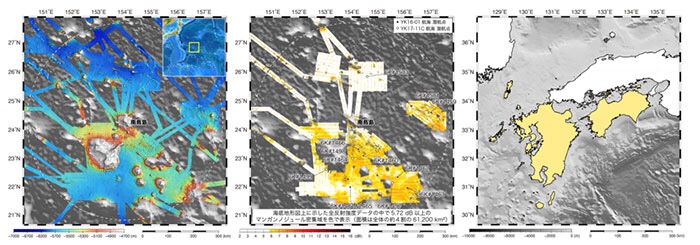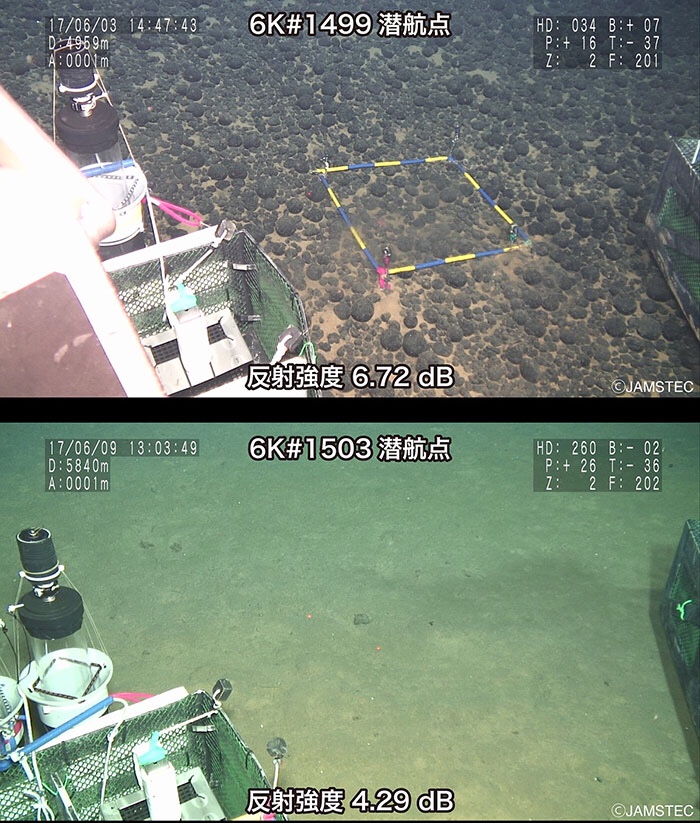

AIST: Clarification of dense manganese nodule area: 40% distribution in Minamitorishima EEZ
AIST: Multiple seafloor observation surveys using sound waves
Establishment of efficient and economical exploration methods is required to realize the development of mineral resources distributed on the seabed.
This time, using a sound wave emitted from a ship, multiple seafloor observation data are combined and analyzed.
“Where the manganese nodules are distributed on the wide seabed” is plotted on a map.
In addition, we have established a “new exploration method for accurately calculating the area“.
Ocean floor observation data: Survey results (Figure 1)
A detailed analysis of how the sea floor reflects sound waves.
Manganese nodules were found to be densely distributed in 61,200 square kilometers of Minamitorishima EEZ (Japan’s exclusive economic zone around Minamitorishima).
Manganese nodules: dense area
The area of this dense manganese nodule area is equal to the combined area of Shikoku and Kyushu.
The dense area is not limited to “Southeast Minamitorishima EEZ announced by the research group in 2016.”
What, it was widely distributed throughout Minamitorishima EEZ.
The dense area corresponds to a place (Fig. 1 and Fig. 2) with a specific reflection intensity (5.72dB based on the current observation data).
https://www.aist.go.jp/aist_j/press_release/pr2019/pr20191211/pr20191211.html